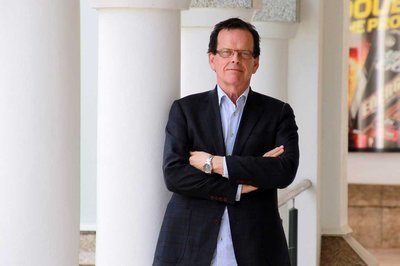
Tom Cruise as Lee Child's fictional retired military policeman Jack Reacher. The character can teach readers a lot about leadership, says Dr Ralph Bathurst.
This is the fourth in a series of five articles on leadership by Dr Ralph Bathurst, who is the academic coordinator for Massey’s Master of Advanced Leadership programme. Each week he will tackle an aspect of leadership through the lens of a favourite fictional character, Jack Reacher.
Read Article 1: Jack Reacher and the Call to Leadership
Read Article 2: Jack Reacher and Thinking Inside the Box
Read Article 3: Jack Reacher and Leading Within Your Comfort Zone
Jack Reacher and his investigating partner are charged with locating an American who has a highly priced item for sale. The entire team have CIA, FBI and military resources available to them, so they figure that they might be able to find the American through mining existing data. They know that there will be another meeting between the American and the Middle Eastern messenger, but where will it occur?
It could be anywhere in the world, so the best option is to wait in the United States and mobilise when they get word of the meeting. Only, by then, it would be too late to do anything because the targets would be have evaporated without trace.
The team has so little information and they cannot pre-empt a meeting, so there seems little point to doing anything, except sitting tight and waiting.
Reacher has another idea: go to Hamburg and at least be closer to the action. His rationale is to play the percentages. Let’s pick up the story:
Neagley said, ‘The second rendezvous might not even be in Hamburg.’
‘I agree. It’s probably ten to one against. Which means if we stick around in Hamburg we have a one-in-ten chance of being in the right place at the right time. Whereas if we go back to Virginia we have a zero chance. They’re not going to meet at the Washington Monument. That’s for damn sure.’

Massey School of Management senior lecturer Dr Ralph Bathurst.
Take action and make adjustments as information comes to hand
This is a fairly typical leadership problem: what is the best course of action, when the chances of success are not guaranteed?
Karl Weick is one of my favourite organisational theorists. His landmark book Sensemaking in Organizations explores how decisions get made and then how people give meaning to those decisions. When faced with a complex problem, a leader needs to make a decision and act on it. The leader may hesitantly ask, “How do I know it’s the right decision?” Weick would reply, “You don’t!” And then he would add, “The fact that you made a decision and acted makes the decision right...for now.” Of course, although I am paraphrasing him, you can see there are many holes. But Weick’s comeback would be that any decision is better than no decision.
Decisions can be revisited as more information comes to hand. At least by making the decision and acting, you have set the enterprise in motion. Steering the process can come once you are mobile.
Weick says, “Leap before you look!” and “Ready, fire, aim!” These are not merely cute aphorisms to get us thinking, they are viable courses of action. It’s a percentage game that sports people know; and it’s an important skill for leaders.
Yes, making a decision to follow a particular path without all the information takes a lot of courage. And it takes even more courage to adjust direction as conditions change and more information becomes available. Reacher would advise that taking action may have a one-in-ten chance of succeeding, but it is better than zero chance.